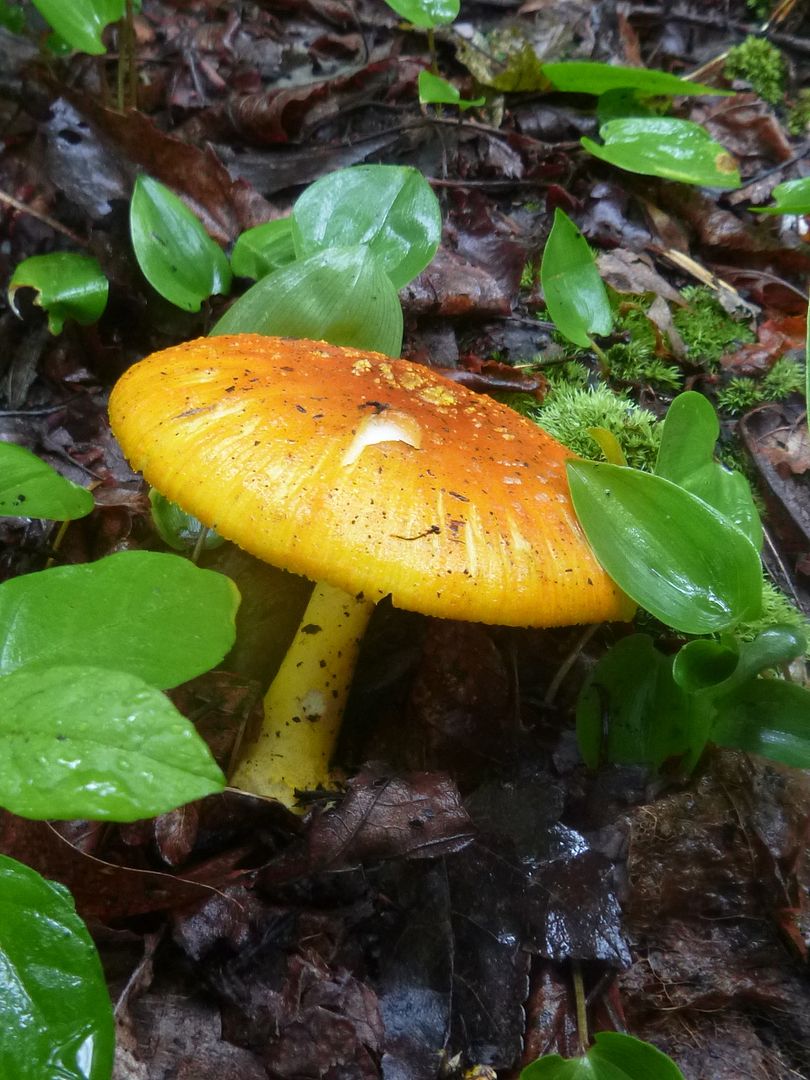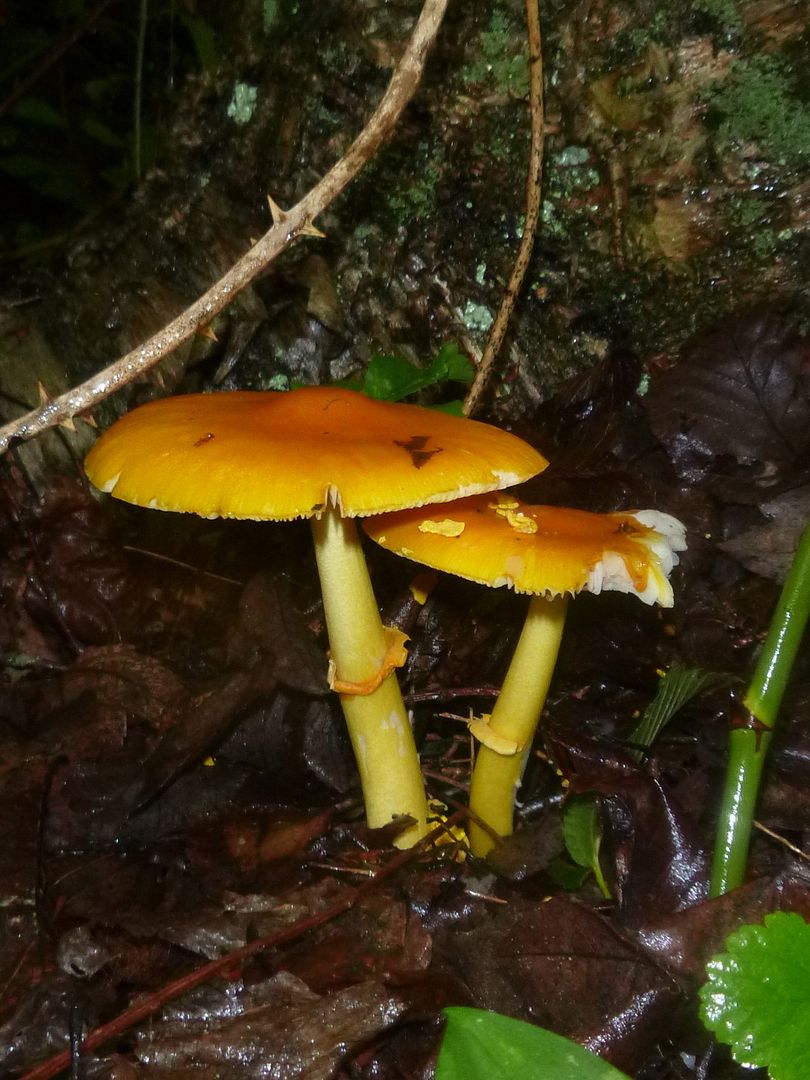280 days of Urbpandemonium #89

This rainy day, and this mushroom I found on this rainy day, marked the end of my personal drought of interesting mushrooms. Big, bold, orange, and complete with all the field markings of an Amanita*: Warts on the cap, a ring on the stem, a swelling at the base. Or if you want the proper terms, patchy universal veil remnants on the pileus, partial veil remnant in the form of an annulus on the stipe, and a clublike volva. The yellow warts and stem helped me identify it as A. flavoconia** called "yellow patches" in many field guides. The feature that earns it that name has been washed off by the rain in these other specimens--good thing there were a ton of these around in various stages of development. These mushrooms are the reproductive structure of a fungus that weaves the roots of the various trees together as a massive interconnected symbiotic superorganism. It is noted for being especially likely to form mycorhizzae with hemlock, a tree species that in our area is under serious stress from an invasive insect. Astonishingly, considering how large and common and colorful this species is, there is no definitive note on whether it is edible or not. All the guides advise caution, since this genus includes the species of mushrooms that have killed more people than any other.

* "Fungus"
** "Yellow plaster"